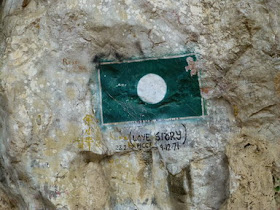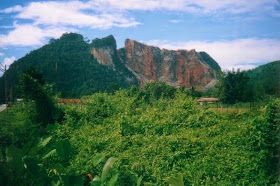The cave is one of about 400 surrounding Jomblang Resort. This is quite a new resort, a green oasis in a karst landscape! It is owned by Indonesian filmmaker and caver Cahyo Alkantana. Semanu is southeast of Wonosari which is southeast of Yogyakarta.
Luwang Jomblang is connected to Luwang Grubug and the system is known as Luwang Grubug-Jomblang". It was explored by a British team in 1982 and surveyed by a Belgian-French team. For more info see Atlas of the Great Caves and the Karst of Southeast Asia Vol 40 & 65.
I haven't been into Gua Jomblang, I have only seen the entrance from the top -
A nice video of abseiling into the cave has been posted by Ricky Martin, and is called "My Assignment to Jomblang Cave.
See also Jakarta Post 11 March 2014, "Shimmering splendor of Jomblang and Grubug caves".































